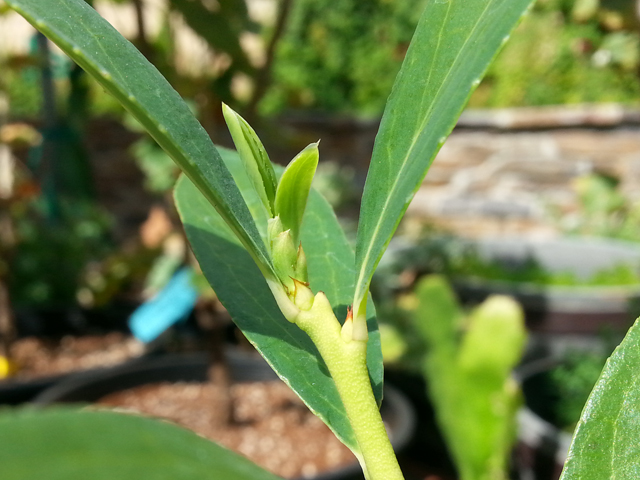Pruning and Propagation

Pruning is an important aid in controlling overgrowth, shaping plants, improved fruit yields, and promoting new growth. Pruning, when done correctly, will heal quickly and promote new growth at the nearest node or bud. Another benefit of pruning is my personal favorite. Pruning supplies cuttings from which one can more quickly and easily propagate identical plants.
Pruning requirements aren’t the same across all plants. Fruit bushes often require knowing the age of branches. In the case of currants, the best producers of currant berries are the two to three year old branches. Older branches, 5 years or more, typically serve as a branching limb for new limbs, or should be removed near the base.
For Dragon Fruit, the 2nd year and third year limbs are also the producers of fruit. Afterwards, they can be removed to promote newer growth, and or to maintain a plants shape and manageability. Dragon Fruit, and many of the Pitaya hybrids, can easily be grown from cuttings.
Growing from these cuttings will reduce the amount of time it takes to begin producing fruit. Starting from seed often means at least a two year period, before producing fruit. It will also likely be the first time you could determine if your seed was true seed, or if it had been cross pollinated, producing a less desirable plant than the parent or mother plant.
Because propagating plants from cuttings is faster than from seed, and the clones will be identical to the mother plant, most commercial growers, including marijuana growers, use cuttings as a primary method of propagation. Less easy and practical for the home grower, but commercially applicable, is micro propagation through cell tissue culture. I’ve personally experimented with mixed results, and will eventually post specifically about that method in separate post.
If you plan ahead, and know you will be removing a limb, perhaps a low growing one, ground layering could be a good option for propagation. If the limb is higher, then air layering may be a good bet.
Layering gives a plant the opportunity to root, prior to being removed from a parent plant, and drastically improves survivability once transplanted.
Tags: Cloning, Cuttings, Propagation, Pruning Comments